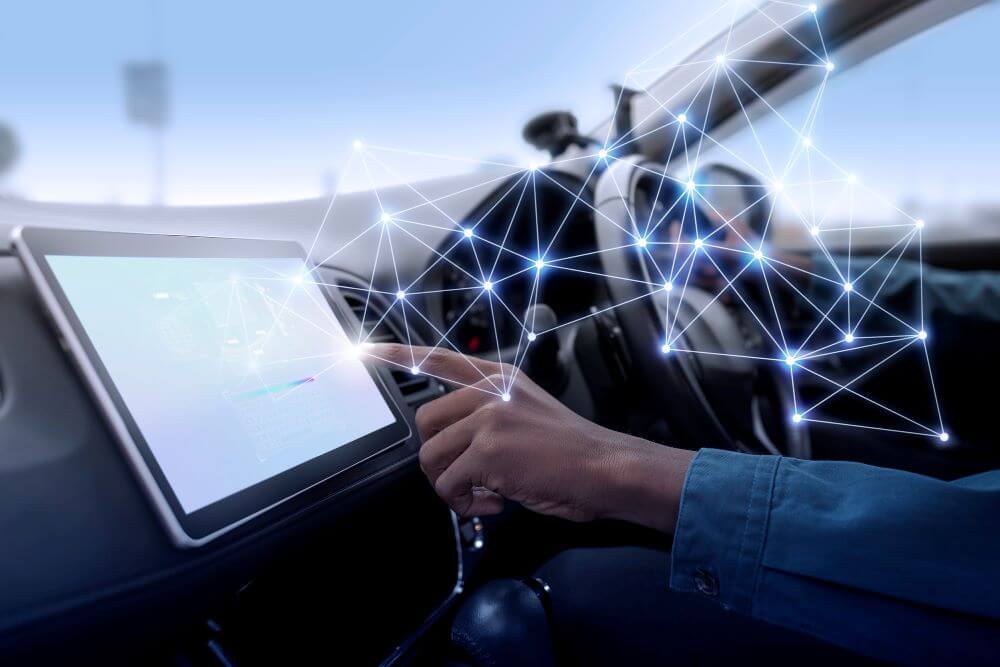The consumer packaged goods (CPG) industry faces a constant whirlwind of challenges: unpredictable demand, fleeting consumer loyalty, and global disruptions. It’s a complex dance of variables where even minor missteps can cause significant issues. It is precisely where AI in CPG becomes a game changer, offering practical and transformative solutions. We’re not just talking about minor tweaks; we’re fundamentally rethinking how CPG supply chains operate. The synergy of AI and CPG is leading to highly accurate demand forecasting, optimal inventory, and robust risk management, ultimately creating incredibly efficient, “self-driving” supply chain operations.
The Imperative for Change: Why CPG Supply Chains Need AI
Let’s be honest; old methods no longer suffice. Relying on guesswork or basic spreadsheets for a sprawling CPG supply chain is like navigating a stormy sea in a flimsy boat. This leads to common problems: empty shelves during peak demand or overflowing warehouses, both of which cost money and frustrate customers. Traditional models struggle with inaccurate demand forecasting and inefficient inventory management, making them vulnerable to disruptions. Without AI, CPG companies risk losing market share, incurring increased operational costs, and failing to meet the evolving expectations of consumers.
AI’s Foundational Role: Highly Accurate Demand Forecasting
Demand forecasting has long been a challenge for CPG. Traditional methods often look backward, which is like driving by looking in the rearview mirror. AI, however, is a different story. It’s like having a crystal ball because it can process massive, complex datasets. Machine learning algorithms analyze not only past sales but also external factors, such as weather, social media trends, competitor promotions, and economic indicators. By crunching all this diverse data, AI applications in the CPG industry generate significantly more accurate predictions, reducing both stockouts and costly overstocking.
Beyond Historical Data: Leveraging Unstructured Insights
This is where AI truly outshines older methods. Imagine manually sifting through millions of tweets or news articles to gauge sentiment about a new product. Impossible. AI, intense learning models, excels at this. It can analyze vast amounts of unstructured data, gleaning critical insights from natural language. This includes processing sentiment, understanding the local impact of events, or predicting sales spikes from breaking news. This ability to integrate nuanced information, including insights from generative AI in CPG and conversational AI in CPG, creates a dynamic demand signal that traditional spreadsheets cannot capture.
Optimizing Inventory and Operations with AI
AI for CPG companies doesn’t stop at predicting demand; it extends deeply into managing your entire inventory. From raw materials to finished products, AI ensures optimal stock levels. It analyzes sales trends, lead times, and even transportation costs to determine precise inventory needs across your network—from distribution centers to individual stores. This dynamic optimization minimizes costly carrying costs while maximizing product availability. Beyond simply counting boxes, AI also revolutionizes warehousing operations by optimizing pick paths, automating order fulfillment, and even anticipating equipment maintenance needs to enhance efficiency.
Real-Time Inventory Visibility and Dynamic Stocking
Trying to track every item in a large warehouse manually is a Herculean task. With AI, however, real-time inventory visibility becomes a reality. Sensors and automated scanning feed constant data into an AI-powered platform. This means knowing not just what you have but exactly where it is and when it moves, allowing you to anticipate replenishment. If demand for a product suddenly jumps in one region, the AI can instantly recognize it, adjust forecasts, and even trigger replenishment orders. This dynamic stocking prevents both excess inventory and frustrating stockouts.
Mitigating Risk and Enhancing Resilience
The last few years have highlighted the fragility of supply chains. A slight hiccup can cause global disruptions. This is where AI truly acts as a guardian, providing robust risk mitigation. Imagine an AI constantly monitoring global news, weather, and geopolitical developments, identifying potential disruptions long before they escalate into crises. This proactive analysis enables it to identify impending natural disasters or port congestion. The AI can then model various scenarios and suggest contingency plans, making the AI in the CPG industry supply chain far more resilient and adaptable to the unexpected.
Towards the “Self-Driving” CPG Supply Chain
The ultimate goal for many in CPG is the “self-driving” supply chain. This isn’t about robots running everything but about AI-powered automation orchestrating processes with minimal human intervention. Think of it as a sophisticated conductor making real-time adjustments across the entire orchestra. AI seamlessly integrates data and decision-making across planning, procurement, production, and logistics. If demand for a product surges, the AI can autonomously adjust production schedules, order more raw materials, and even re-route shipments. This level of autonomous adjustment yields an intelligent and highly efficient system.
AI-Driven Logistics and Route Optimization
In a “self-driving” supply chain, logistics is a prime beneficiary of AI. AI for CPG sales utilizes sophisticated algorithms for dynamic route planning, taking into account real-time traffic, weather conditions, and delivery windows to achieve maximum efficiency. It’s also excellent at optimizing load consolidation, ensuring trucks are fully packed, and reducing wasted space and fuel. Furthermore, AI provides highly accurate predictive delivery times, a significant benefit for both retailers and consumers.
Here are some ways AI transforms logistics:
- Dynamic Route Optimization: AI determines the fastest and most fuel-efficient routes, thereby reducing transit times and costs.
- Automated Warehouse Robotics: AI-powered robots handle picking and packing, significantly increasing accuracy and speed.
- Predictive Fleet Maintenance: AI analyzes vehicle data to anticipate maintenance needs, preventing costly breakdowns.
Challenges and the Path Forward
While an AI-powered CPG supply chain is compelling, implementation has hurdles. Data quality is paramount; AI thrives on high-quality data so that inconsistent information can be a significant roadblock. There’s also a need for skilled talent, as data scientists and AI engineers are crucial to operating and interpreting these systems. Integrating with legacy systems can be challenging due to their complexities. Finally, we must consider the ethical implications of AI, ensuring fairness and transparency. Overcoming these challenges requires a phased approach, proving value incrementally, and evaluating strategic partnerships for AI solutions in the CPG sector.
Conclusion
The CPG supply chain, once reliant on guesswork, is being fundamentally reshaped by Artificial Intelligence. AI in CPG is no longer just an upgrade but a transformative force. It enables highly accurate demand forecasting by synthesizing vast data, optimizes inventory management to an unprecedented degree, and builds robust defenses against the unpredictable. The vision of an increasingly resilient and efficient “self-driving” supply chain where AI orchestrates operations is rapidly becoming a reality. For CPG companies aiming for competitive advantage and sustainable growth, the adoption of AI and CPG solutions isn’t a luxury; it’s an absolute necessity.






